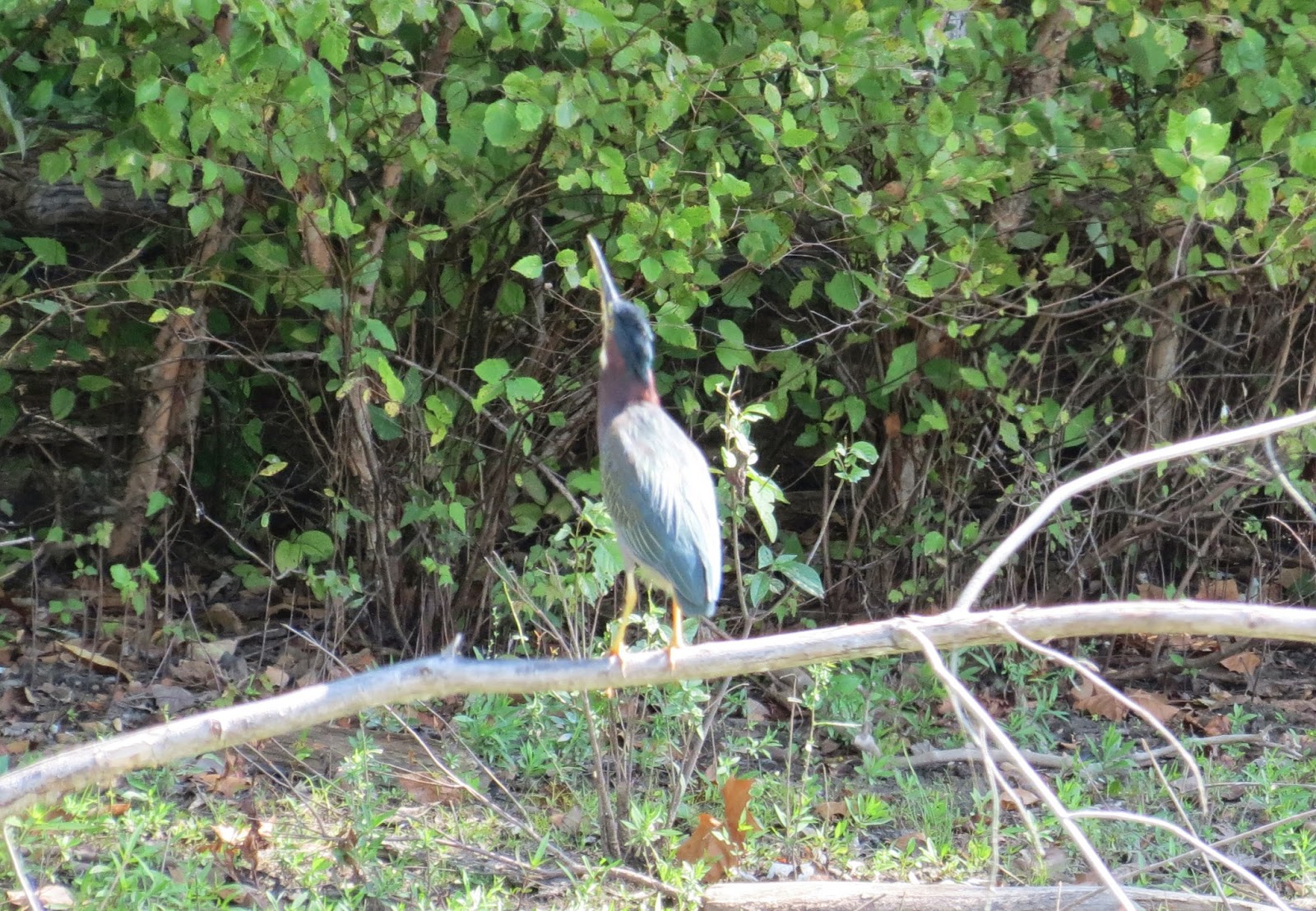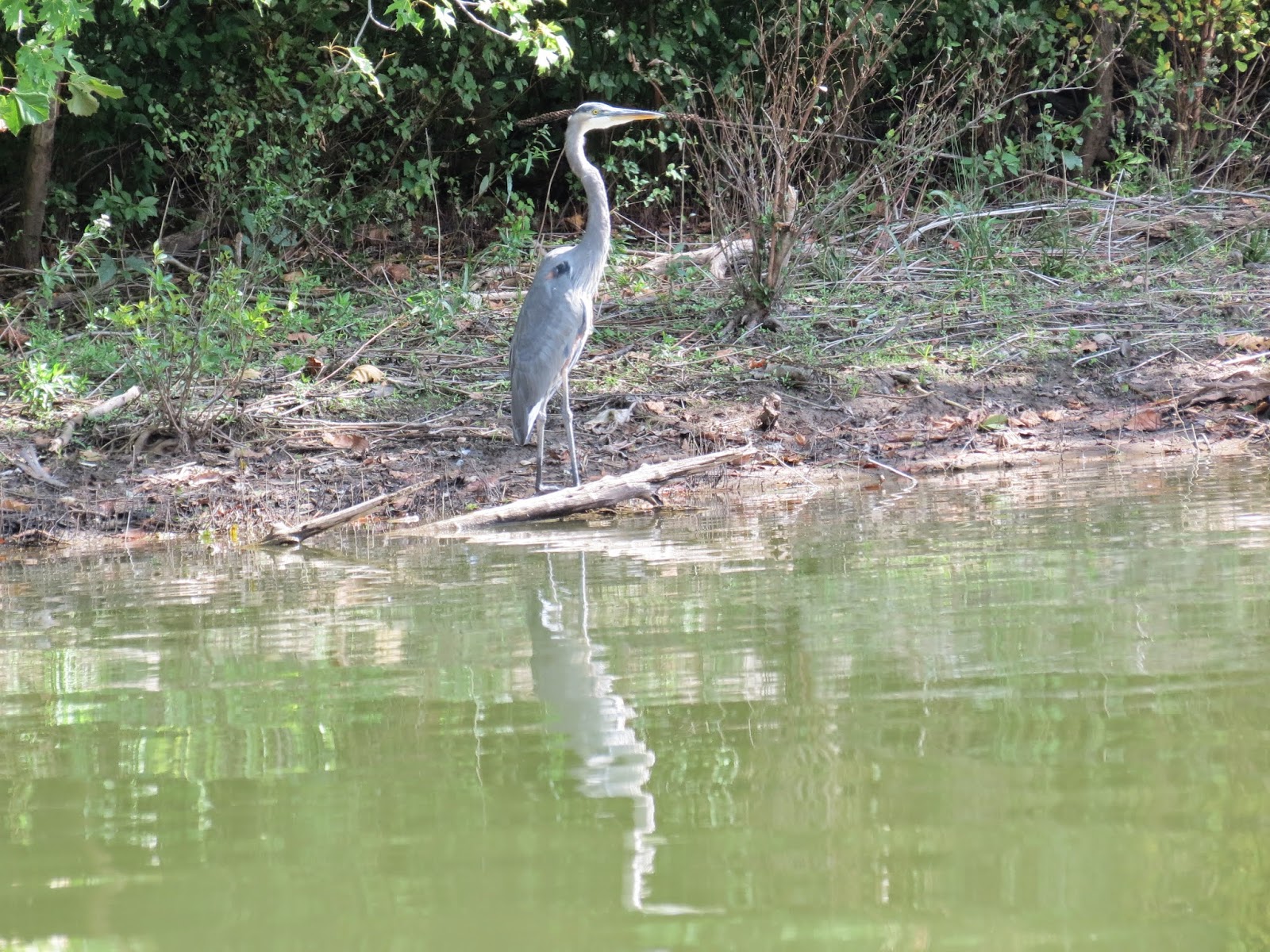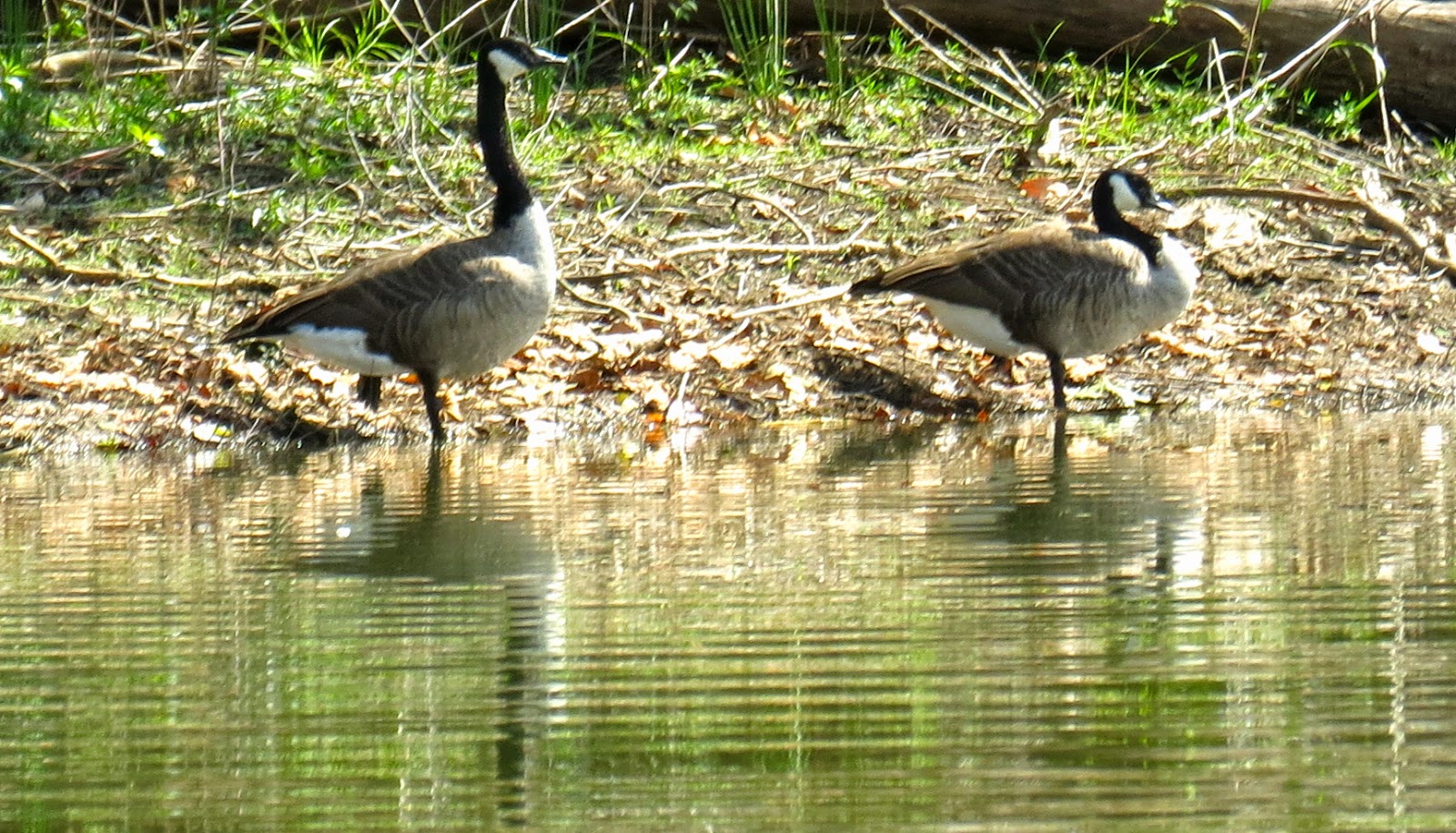I chose Fort Frederick State Park because it has all of my favorite things: some history, hiking trails, and kayaking water.
Plus the campground was quiet (just two campers) and the sites were level. I arrived about lunch time on Sunday.
After settling in, I set out to tour the fort, seen here in an aerial view.
The colony of Maryland built the fort during the French and Indian War in 1756.
It was created to protect the frontier and discourage Indian raids in the colony.
The fort has been restored to reflect that time period, and costumed re-enactors present programs on the weekends.
Indians had been burning wooden stockades, so the decision was made to build this fort of local rock. The wall measures 22 feet high at its highest point.
These wooden doors are the only entrance to the fort and were closed except when a supply wagon came through. Individuals were allowed to enter through the smaller door known as the wicket gate. Note the row of spikes on top of the gate to discourage anyone from climbing over the top.
Restoration of the fort's wall and buildings was done by the CCC in the 1930s. This photo shows what it looked like before restoration had begun.The CCC also conducted archaeological digs in and around the fort. Note the neat penmanship!
CCC at work.
Reconstruction of the soldier's barracks.
The lighter colored mortar at the base is the original wall that survived. The darker portion is the reconstructed part.
Catwalks were built all around the inside of the walls. This section was reconstructed to give an example.
The rock wall is three layers thick. The outside layers are mainly limestone with a rubble layer between. I measures four feet thick at the bottom and tapers to two feet thick at the top.
There were Two long barracks for soldiers have been reconstructed. They can house 200-400 troops, but no more than 200 were ever housed here.
You can see the foundation outline of the officers quarters behind the flagpole, which have not been reconstructed. A well can be seen to the left of the barracks.
The barracks were the enlisted men's quarters, but the East barracks now houses the fort's museum on the second floor, and shows an officer's quarters, storehouse, and housing for camp followers (women).
Officer's quarters:
Camp followers were women hired by the army to cook for the officers, do laundry, sew, clean and do nursing duties.
Women's quarters:
The second floor museum tells about the years of the French and Indian War,
Has artifacts found during the archaeological dig:
The fort had later uses too. During the American Revolution it was used as a prison camp for British troops, many from the battles of Saratoga and Yorktown.
During the Civil War a company of Union soldiers briefly camped in the fort's ruined walls. They were here to guard the C&O Canal. They fought a skirmsh with Confederate soldiers on Christmas Day, 1861, near Fort Frederick.
After the Civil War the fort and land was purchased and farmed by the Nathan Williams family…freed slaves. The walls of the fort served as enclosure for livestock:
The west barracks shows the life of the common soldier. This is the drum and fife corps. They practiced and played and answered questions about their life and the fort.
Activities of daily life.
The man with the musket is readying for the musket firing demonstration.
Since the fort was never full of soldiers, some rooms were used for storage.
Weapons and gear at the ready.
Cherokee Warriors agreed to help Maryland in the fight against the French and their American Indian allies. They were sometimes housed here.
Soldiers barracks.
Fire was kept burning with a pot of hot water over it.
Chamber pots were emptied and contents buried outside the walls of the fort.
Rations
The Visitor Center and store buildings were built by the CCC in the 1930s.
Some news about the fort in the 1700s...
In 1922 the State of Maryland purchased the fort, and in the 1930s the CCC was assigned to the park to perform archaeology, repair the stone wall, and develop the surrounding land into a state park, including the campground. This building houses exhibits about the CCC.
Due to its large size and strong construction the fort was never attacked.
The Colonial Flag that flew over Fort Frederick in the 1700s. And that concludes our tour of the fort.
So what else is here? Well a train track runs through and is still active. You can hear the trains at night unless you take out your hearing aids like I do.And a National Park runs through the middle of the state park. The C&O Canal National Historic Park is a narrow park along the old canal and towpath.
Map of the National Park
Thistle and I took hikes along the towpath, and those with bikes went a lot farther. In some places there are locks and other historic exhibits having to do with the canal.
Wooden bridge over the canal which has no water in it here.
There is another trail that goes by an old beaver pond.
The pond is covered with scum and we saw no signs of beaver.
But it was a nice place for our morning walk.
Several places where you could walk to the pond for fishing access or to look for wildlife.
Evidence of fishing activity...
This is the only wildlife we saw on the beaver pond.
There is also a lake here (Big Pool Lake), created when the canal was built. See the boat ramp on the other side?
I used that boat ramp the next morning. It was a beautiful day and a beautiful place for kayaking. I took Thistle for a nice walk first, then left him home.
These fishermen were the only other people on the lake, and they stayed in that same spot the whole time I was there….about 2 1/2 hours.
It's that time of year….flocks of geese were flying in to rest on their journey south.
Canada GeeseAnd more
Moving on...
A turtle swimming by.
I see 3 critters up ahead…can you spot them?
A turtle on the left and a Cormorant on the log.
The next log has a Great Blue Heron.
Lots of basking turtles, big and small.
More turtles and a Green Heron exiting right.
After an hour and a half of gentle paddling and floating I reached the end of the lake.
And turned around...
Another Green Heron...
This one wanted to be famous.
How about a frontal view?
Do you like my profile? Aren't I beautiful?
There were some little birds too. I think this is a Blue-Gray Gnatcatcher.
Another Great Blue Heron.
He didn't want to be famous.
And another Green Heron…or maybe the same one following me.
Why is he looking up?
Perhaps he saw that Osprey taking off from the tree above.
Osprey
Back to the geese. I gave them a wide berth so I wouldn't disturb their rest.
Another Great Blue Heron
A pair of Canada Geese
Blue-Gray Gnatcatcher
Had a great relaxing paddle around the lake. Then Thistle and I followed this trail to the river…the Potomac River flows just behind the campsites.
The Potomac River….too shallow and too hard to access for the kayak, but people fish.
I have one more day in this park…haven't decided how I'll spend it. I may take the car into town and find a laundromat…it's time.































































































No comments:
Post a Comment
Due to recent spam in comments, new comments will now await approval before publishing.